![[*]](Images/gaucheb.gif)
![[*]](Images/droiteb.gif)
![[*]](Images/hautb.gif)
![[*]](Images/tdm.gif)
Previous: Discussion and Conclusion
Next: Single Gyre Circulation in Irregular Domains
Up: Finite Difference Methods in Rotated Basins
Figure 4.1:
Locations of variables near a step for the SW C-grid model (left panel)
and for the quasi-geostrophic (QG) model (right panel). For the SW model,
dashed squares are the boundary normal velocity nodes, white disks are the
vorticity nodes where the relative vorticity is specified to be zero and
black disks are the vorticity nodes for which a discretized vorticity
equation can be written. In grey is the region delimiting the vorticity
budget domain. This region does not extend to the model boundary. Instead,
there is an half cell band around the boundary (left in white) where we
cannot derive any budget. A similar problem exists for the QG
approximation.
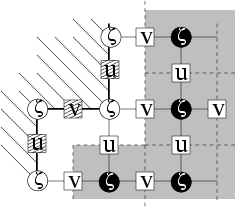
|
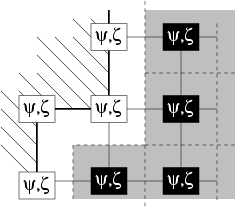
|
Figure 4.2:
Local advective flux along the boundary ($\Cor \cdot
\vdeltal/||\vdeltal||$) at 20 km resolution in a square basin for the
enstrophy conserving formulation of the advection using the B combination
of Table~\ref{four_cases}. The heavy-lined curve is for no rotation of the
basin, the light-lined curve is for a small angle rotation of the basin
($3.4^o$) with respect to the grid. Due to the rotation angle, 4 steps
occur along each side of the square and cause abrupt changes in the local
advective flux.
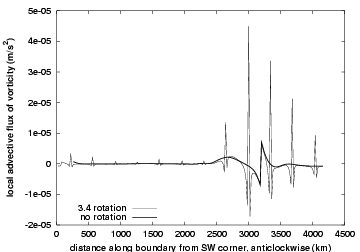
|
Figure 4.3:
Northward flow past a forward step. The shaded area is the model domain.
We consider only the two momentum nodes for which the \AM~formulation
differs from the conventional formulation. The $\zeta$-point at the tip of
the continent has $(i,j+1)$ indices. Arrows indicate direction of the
flow.
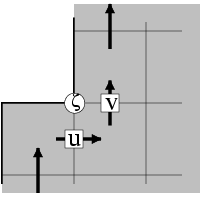
|
Figure 4.4:
(a) Kinetic energy after spin-up and (b)
ratio of $\foa$ to $\fwind$ for the four combinations
combinations. Results are shown for a $3.4^o$ rotation angle of the
basin. The A-B (no rotation) curve is also plotted for comparison.
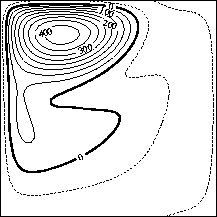
|
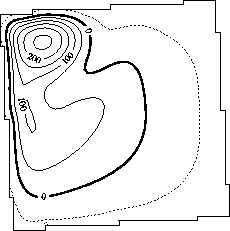
|

|
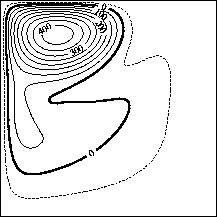
|
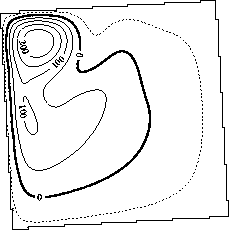
|
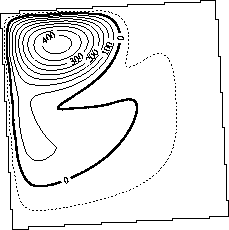
|
Figure 4.5:
(a) Kinetic energy after spin-up and (b)
ratio of $\foa$ to $\fwind$ for the four combinations
combinations.
Results are shown for a $3.4^o$ rotation angle of the
basin. The A-B
(no rotation) curve is also plotted for comparison.

|
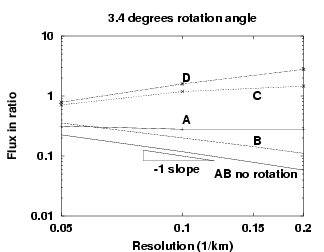
|
Figure 4.6:
Kinetic energy after spin-up for the B combination in
$10^{10}$~m$^5$/s$^2$.
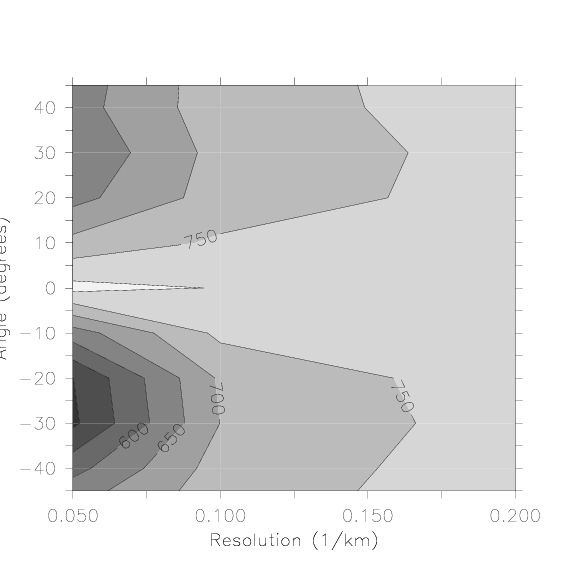
|
Figure 4.7:
Ratio of $\foa$ to $\fwind$ for the B combination.
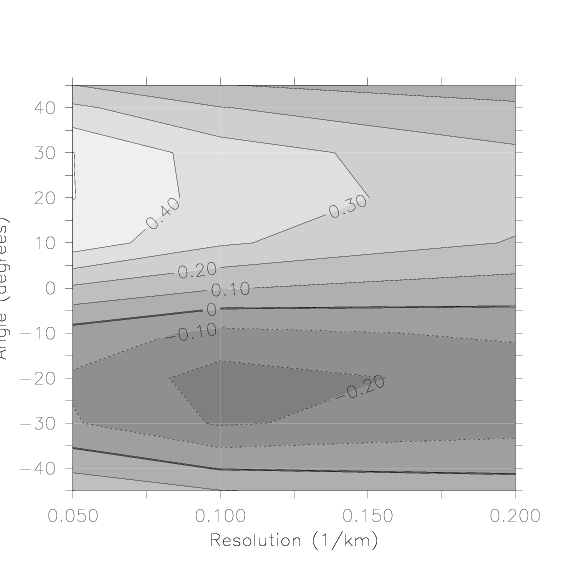
|
Figure 4.8:
Convergence of $\foa$ with
resolution for 0$^o$, 20$^o$, 45$^o$ rotation angle
for the B combination.
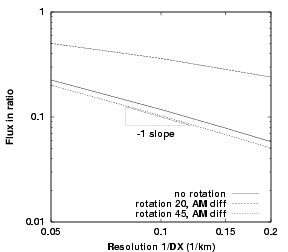
|
Figure 4.9:
Kinetic energy during spin-up for six runs
using the $J_1$ Jacobian:
(a), $0^{o}$ angle at 20 km resolution;
(b), $30^{o}$ angle at 20 km;
(c),$-30^{o}$ angle at 20 km;
(d), $0^{o}$ angle at 10 km;
(e),$ 30^{o}$ angle at 10 km;
(f),$-30^{o}$ angle at 10 km.

|
Figure 4.10:
Kinetic energy after spin-up for
(a) $J_3$ at $0^{o}$ rotation,
(b) $J_7$ at $0^{o}$,
(c) $J_3$ at $30^{o}$,
(d) $J_7$ at $30^{o}$,
(e) $J_3$ at $-30^{o}$,
(f) $J_7$ at $-30^{o}$.
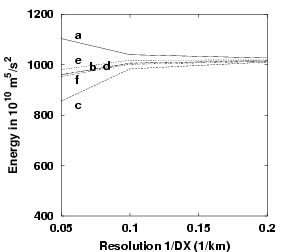
|
Figure 4.11:
Ratio of $\foaaa$ to the wind input for
(a) $J_3$ at $0^{o}$ rotation,
(b) $J_7$ at $0^{o}$,
(c) $J_3$ at $30^{o}$,
(d) $J_7$ at $30^{o}$.
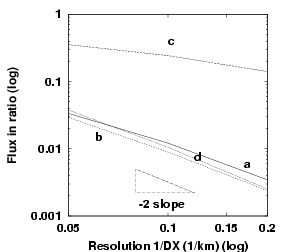
|
Figure 4.12:
Ratio of $\fc$ to the wind input. (a-d) as
described in Fig. 4.10.
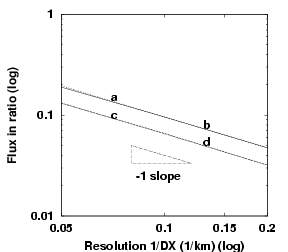
|
Figure 4.13:
Ratio of $\foa=\foaaa + \fc$
to the wind input. (a-d) as
described in Fig. 4.10.

|
![[*]](Images/gaucheb.gif)
![[*]](Images/droiteb.gif)
![[*]](Images/hautb.gif)
![[*]](Images/tdm.gif)
Previous: Testing the Different Numerical
Next: The Wind-driven Circulation in
Up: Testing the Different Numerical
Get the PS or PDF version here
Frederic Dupont
2001-09-11


![[*]](Images/gaucheb.gif)
![[*]](Images/droiteb.gif)
![[*]](Images/hautb.gif)
![[*]](Images/tdm.gif)
















![[*]](Images/gaucheb.gif)
![[*]](Images/droiteb.gif)
![[*]](Images/hautb.gif)
![[*]](Images/tdm.gif)